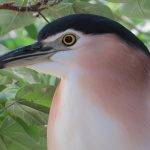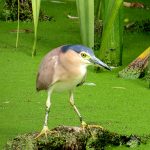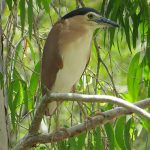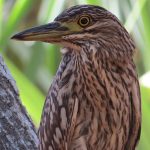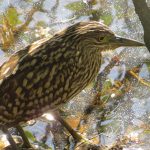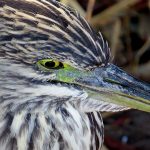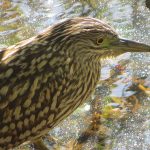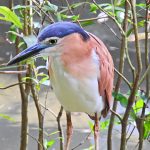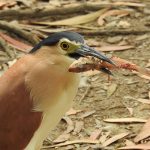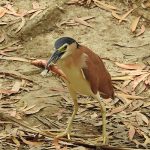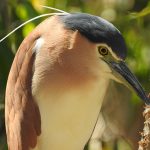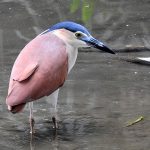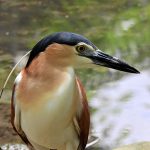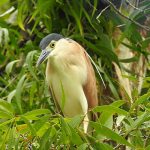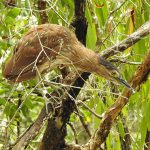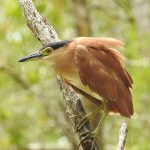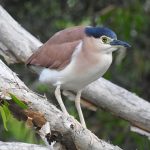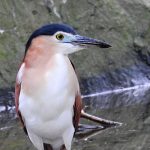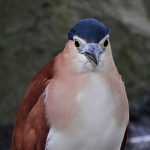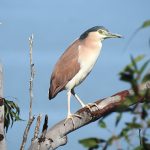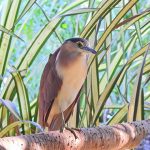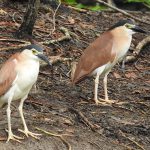NANKEEN NIGHT HERON
The Nankeen Night Heron is a wading bird known for its nocturnal habits and distinctive appearance.
They are medium-sized herons, measuring about 55-65 cm in length with a predominantly cinnamon or rufous-colored plumage, which is why they are often referred to as “Nankeen.” Their plumage appears more vibrant during the breeding season. Their wings are also marked with dark patches, and they have a long, pointed, and dark-colored bill.
These herons are typically found in a variety of wetland habitats, including freshwater and saltwater environments. They can be seen in mangroves, swamps, estuaries, lakes, and rivers. They often choose well-vegetated areas for nesting.
The Nankeen Night Heron is distributed across Australia, New Guinea, parts of Indonesia, and some other nearby islands.
As the name suggests, Nankeen Night Herons are primarily active at night, feeding during the dark hours. They are known for their stealthy hunting behavior in low light conditions.
They are often solitary birds or found in small groups, roosting during the day in dense vegetation to avoid predators.
Their diet mainly consists of fish, frogs, crustaceans, insects, and other small aquatic creatures. They use their sharp beaks to capture prey.
Nankeen Night Herons build platform nests in trees or dense shrubs near water. The nests are made of sticks and lined with leaves. They lay 2-4 eggs, and both parents take turns incubating them and caring for the chicks.
Like many wetland-dependent birds, they can be affected by habitat destruction and disturbances to their breeding sites.
Their vocalizations include various croaking and squawking sounds. They are generally quiet birds, especially when compared to some other heron species.
While some populations of Nankeen Night Herons are sedentary, others may migrate in response to seasonal changes in their habitat and food availability.
Nankeen Night Herons are fascinating birds with their secretive nocturnal behavior and distinctive appearance. They are often sought after by birdwatchers for their unique characteristics and behavior, making them a notable part of the avian biodiversity in their range.

